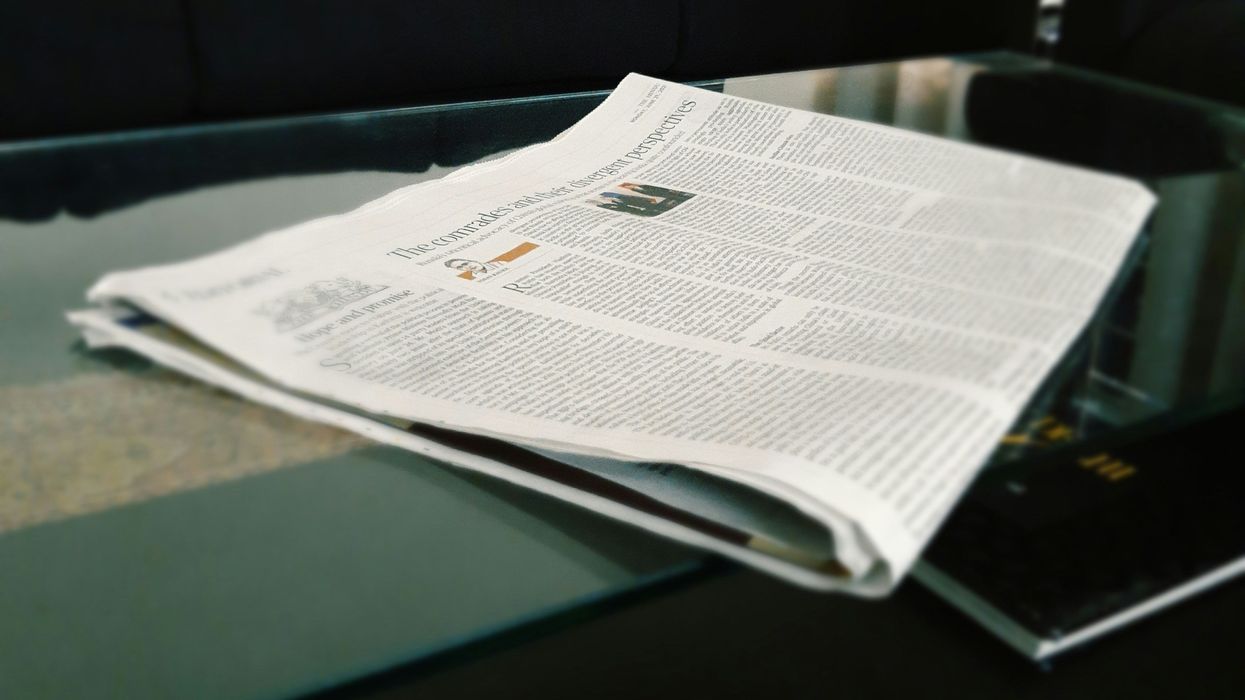I used to enjoy doing my schoolwork in my college newspaper’s office. There is a series of tall library shelves filled with dusty books held together by loose binding that contain every article printed since our inception in the 1930s.
The book covers have lost the sharpness of their hues over time, and the thin old papers inside are yellow and torn, but inside those books lie almost 100 years of articles that tell the stories and history of the college town, Isla Vista, and UC Santa Barbara, as written by student journalists at the Daily Nexus.
One day, as I started perusing the books, the tall dusty bookshelves transformed into a historical archive of their own right. There are thousands of stories in those books that show how students from the Black Student Union protested on campus to create the Black Studies Department in 1968, how anti-Vietnam War protests led to the burning of a Bank of America building in Isla Vista, how people from the unincorporated town of Isla Vista galvanized to create a local government after being reliant on county representatives for decades. At that moment, as I was reading these stories, I realized how all local newspapers hold the history of their community within their pages.
Washington Post's Alan Barth once wrote, 'Journalism is the first rough draft of history.' I understood what he meant in that moment with much more clarity.
But if journalism does serve as the first rough draft of history, biased coverage of marginalized communities doesn't just harm those communities today — it distorts the historical record that future generations inherit. It is then the responsibility of journalists to regularly consider how they immortalize the communities they report on, ensuring that all people’s stories are preserved in their local archives with dignity and humanity.
Journalism is by no means an industry unfamiliar with biased coverage of communities of color. In the wake of the racial reckoning after George Floyd’s murder, several journalism outlets, including the L.A. Times and the Baltimore Sun, released editorials taking accountability for systemic bias in their coverage of communities of color.
Both the L.A. Times and the Baltimore Sun offered examples of moments in the past and present where their coverage propelled harmful misrepresentations in stories that included Black, Indigenous, Latino, or Asian communities. The L.A. Times wrote that during the 1943 Zoot Suit Riots, when “sailors on leave from wartime” attacked Mexican Americans in L.A. wearing the Zoot Suit, the Times “blamed the victims instead of their assailants.”
“When First Lady Eleanor Roosevelt suggested that the rioting might have grown out of racial discrimination toward Mexican Americans, The Times vehemently denied that was possible, asserting in an editorial, ‘We like Mexicans and we think they like us,’” the editorial stated.
The Baltimore Sun wrote about their history of taking law enforcement’s word over that of Baltimore residents for decades, even as “the city of Baltimore adopted a ‘zero tolerance’ style of policing in the late ’90s.” Later, the Department of Justice found that their policy led to repeated violations of constitutional and statutory rights.
“Shortly after the diary release, in 1991, the vicious beating of Rodney King by Los Angeles police officers was recorded on video and broadcast across the country, and white Americans could no longer deny that Black people were being mistreated by law enforcement,” their article stated. “Yet, The Sun would continue to take the word of local law enforcement over Baltimore residents in its reporting for decades to come, largely without question.”
A key function of journalism is to hold authorities accountable and question their actions. It was a mission of journalism; the Sun acknowledged that it had failed to deliver in the context of police brutality in Baltimore.
Journalism is often primary source material for historians, and thus, the bias that colors our work seeps into how the past is later reconstructed and remembered.
As a history major at UC Santa Barbara, I conducted research using magazine articles and advertisements from the 70s to understand how henna came into the U.S. beauty industry. My research revealed that amid the second-wave feminism movement, many women were rejecting cosmetic products in response to the idea of freeing women’s sexuality from the male gaze.
There was a cultural rejection of what was considered synthetic, artificial, and to please a man, and an embrace of what was considered natural, authentic, and for oneself. Cosmetic companies looking to cater to this demographic took advantage of the messaging from the movement and started promoting products they could advertise as for the “natural” woman. This is when henna began emerging as a popular hair dye in the U.S.
While conducting this research, I was struck by how fashion articles and cosmetic advertisements in magazines could help elucidate such a niche topic decades later. I wondered if one day, the articles I write might be examined by later historians to gain a better understanding of the times in which we live today.
Reflecting on the history we learned in high school, some chapters also highlighted the aforementioned issues in journalism, including misrepresentation and underrepresentation. Until college, none of my classes taught me about the Stonewall Riots or Black history outside the context of slavery and the Civil War.
In my own early-career experiences, I have found that some people in communities of color are distrustful of the media and resistant to being interviewed or included in stories. And I knew that harmful coverage from media outlets I was working for was why people were distrustful of me to begin with. Other times, it was because some communities felt journalists were only interested in their stories when there was crime or violence, and that their lives and stories were otherwise largely ignored. And finally, sometimes, people just don’t trust “the media.”
Perhaps I hadn’t considered the true magnitude of the problem. It wasn’t simply a history of biased coverage. It was a historical archive in which several communities of color had been relegated to stereotypes or were left unheard by the people who claimed to serve them. At one point, people lose faith.
That leaves those of us who write the first rough drafts of history, those of us who chronicle the present, to understand the past we inherit and the magnitude of its impact. Within my scope, I’ve attempted to approach reporting by understanding my audience and building relationships with key community voices and groups from the outset of every reporting position. I think about how to reach out to the everyday communities my outlet serves, the advocates and experts that govern my niche, whether that is immigration or education, and the lawmakers that govern and represent the communities my outlet serves.
The effort of establishing relationships early on allows people to get to know me as a reporter. It enables me to prove to them the type of journalist I am, rather than demanding their trust when a story I’m working on requires their perspective. It’s not the solution to a systemic problem, but it ensures I try my best on a personal scale, not just to expect people to be amenable to journalists, but rather to earn the trust they deserve.
Building relationships can be a long-term endeavor, and the trust it elicits can help tell stories that rectify the distorted narratives often perpetuated by newspapers for many communities. It’s a small step but an important one.
On a grander scale, news outlets can also revisit their previous coverage and consider follow-up stories — or the gaps in history left by underrepresentation or misrepresentation — to reframe the stories that define communities in newspaper archives.
Mark Danner’s “The Massacre at El Mozote” revisited a period of the Cold War in El Salvador where the Salvadoran military, backed by the U.S. army, killed hundreds in the name of anticommunism. Until Danner’s work surfaced in 1993, the U.S. government had largely succeeded in discrediting the very idea that the U.S. had partaken in the massacre.
Or perhaps take 'Unbroken: My Fight for Survival, Hope, and Justice for Indigenous Women and Girls' by Angela Sterritt, which combines memoir with investigative journalism to tell the stories of missing and murdered Indigenous women and girls across Canada. Part of the story includes those who went missing along British Columbia's Highway of Tears since the 1970s, examining how insufficient police investigation created a cycle of desensitization and dehumanization of Indigenous women.
And as Sterrit’s work demonstrates, our life experiences can inform stories that bridge the gaps in historical coverage of certain communities. Such efforts serve as a poignant reminder that the ink that writes history is never permanently dry. However, it requires those of us who produce primary sources for future historians to consider the longer-term implications of how we create a permanent record of the people we report on.
Atmika Iyer is a graduate student in Northwestern Medill’s Politics, Policy, and Foreign Affairs reporting program. Atmika is also a journalism intern with the Fulcrum.
To read more of Atmika's work, click HERE.
The Fulcrum is committed to nurturing the next generation of journalists. Learn how by clicking HERE..




















